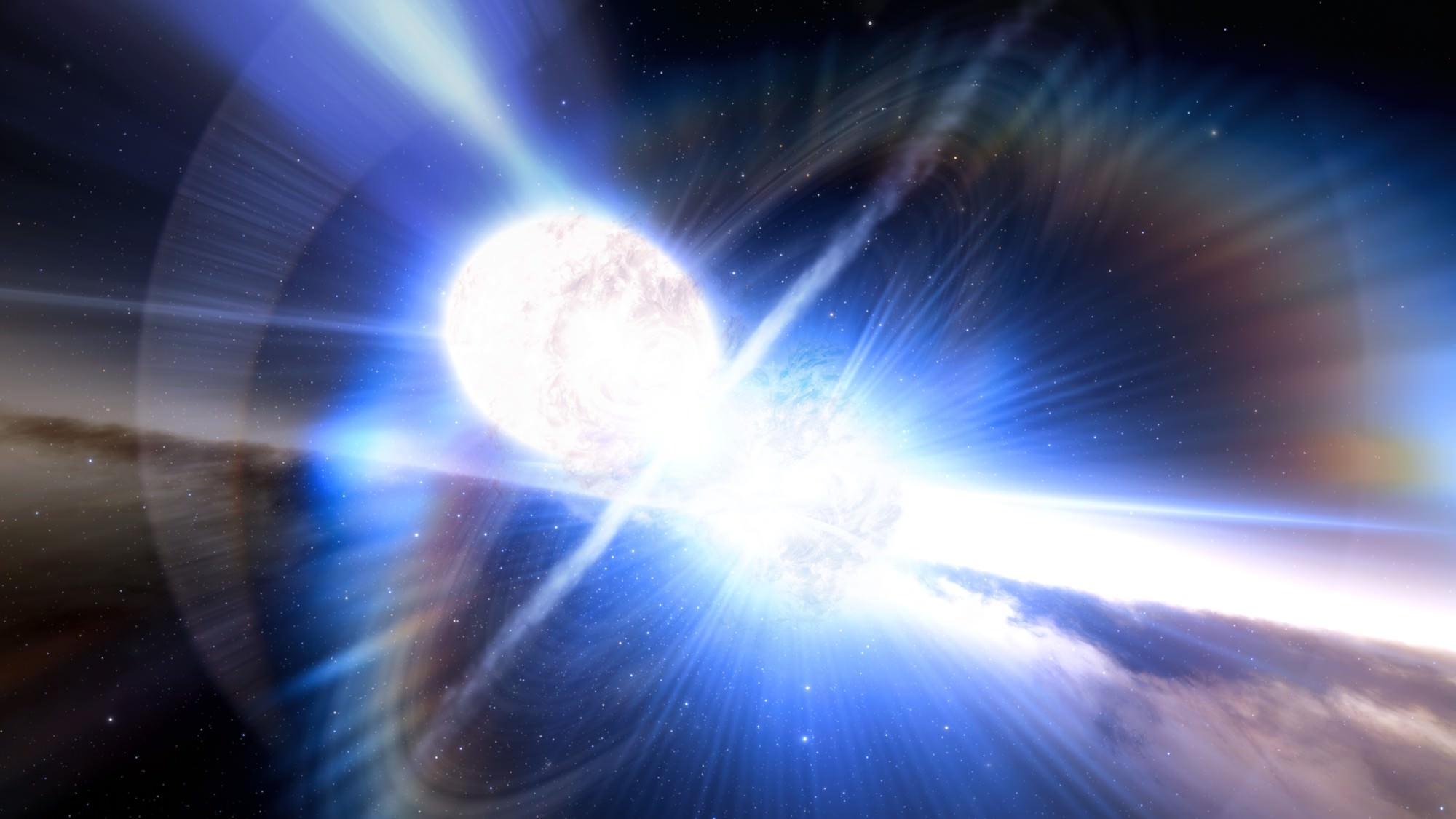World
Alchemy of the Cosmos: Neutron Stars Collide, Create Gold & Confirm Theories
By Mara Lafontaine · June 29, 2023
In brief…
- Scientists observe gravitational waves and light coming from the collision of two neutron stars for the first time.
- We have entered a new era of gravitational wave astronomy.
- The discovery confirms the long-held theory that heavy elements such as platinum, gold, and uranium are forged in neutron star collisions.
- The scientific collaboration involved seventy observatories around the world and in space.
- The event that was observed occurred approximately 130 million light-years away and involved a 1.6 solar mass neutron star colliding with a 1.1 solar mass neutron star.

In an astrophysics breakthrough, scientists have observed both gravitational waves and light coming from the collision of two neutron stars, remnants of supernovae known for their incredible density and compact size.
Laser Interferometer Gravitational-Wave Observatory (LIGO) Director Dr. David H. Reitze told of finding and analyzing the relevant gravitational wave signal in a Washington press conference. “The signal was much different from the black holes that we had detected before.” They had actually found the collision of two neutron stars approximately 130 million light years away. Reitze added, “What makes this event so amazing is what came next. The emission of light across the entire electromagnetic spectrum.”
A worldwide network of 70 observatories from every continent collaborated on the landmark decades-long scientific project, which validated a long-standing theory regarding the creation of heavy elements in neutron star collisions. “This result provides definitive evidence for the first time that elements such as platinum, gold, uranium are actually produced in these collisions,” noted Dr. Reitze.
This remarkable discovery was made possible by LIGO and Virgo, two interferometers operating together, which enabled astronomers to pinpoint the location of the collision in the Hydra constellation. Dr. Reitze said, “For me, the big story is that we’re now using this new tool called gravitational wave astronomy. And we’re combining it with traditional and very powerful electromagnetic astronomy to study the most powerful and violent events in the universe.”